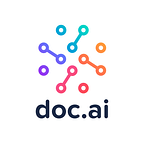30 million Americans are suffering from an undiagnosed disease
For more than half a century medical students have been taught to look for the more common and usual explanation for symptoms, not the rare or surprising. As a result we now have 30 million Americans suffering from undiagnosed diseases.
The zebra has become a symbol for an undiagnosed disease (idiopathic) or rare diagnosis (fascinoma). In nature, a group of zebras is called a dazzle. To us, a dazzle represents the long tail of disease.
The NIH Undiagnosed Disease Program (UDP) has 2 million registered zebras. Not a lot of work is done on individual ZEBRAs because they are not an homogeneous group. The effort needed exceeds the reward to solve it. Zebras could well be the most prevalent disease in the world.
But there is new hope in the age of Precision Medicine, where new technologies like Deep Learning can be used on OMICS data coming directly from the consumer. The consumer-centric approach is now possible because of powerful mobile health devices and services. The blockchain allows decentralization of these devices so that consumers are in control of the information on their edge devices and can conduct their own data trials.
Precision Medicine
In 2015 the United States Precision Medicine Initiative (PMI) replaced personalized medicine with precision medicine, where the focus is on identifying which approaches will be effective for which patients based on molecular information (including OMICS data).
OMICS
OMICS refers to the fields in molecular biology and related fields ending in –ome. At doc.ai we process data from the Anatome (scans), Clinome (clinical record), Exposome (biometeorology, environmental medicine), Genome (genes), Metabolome (nutrition), Microbiome (micro-organisms), Pharmacogenome (genetic effects on meds and vaccines), Phenome (age, gender, BMI), Physiome (vital signs, wellness), Proteome (urine/blood) and the Sociome (social behavior, mostly online).
Deep Learning
Deep Learning is all about identifying patterns by connecting the dots. The machine is very good at classifying (even unsupervised) complex, hierarchical features in data. This could provide answers to patients with mysterious conditions that have long eluded diagnosis. For the machine an undiagnosed disease is an unclassified disease and as long as the disease remains unclassified, it cannot be put on a pathway towards therapy and medication.
Blockchain
Thanks to the Blockchain the ledger can be used to decentralize the data (for collection) and decentralize the kernels (for prediction). Besides these obvious superior advantages over centralization the blockchain allows the use of smart contracts, is private by design and resistant to cyberattacks.
DFC-Direct From Consumer
There was a time when DTC (direct to consumer) testing was the opposite of precision medicine because it was so imprecise. Recently, with digital health devices approved by the FDA and with more dimensions of wellness becoming vital signs, the consumer pathway is an important complement to the clinical pathway. DFC (direct from consumer) data is becoming a reality.
“When you hear hoofbeats think horses, not zebras”
(1940s, Dr. Theodore Woodward)
Each of us is unique. Doc.ai will collect our omic fingerprints and learn our unique health response. Prepare to be dazzled!
And happy Thanks Giving everyone!
doc.ai team
